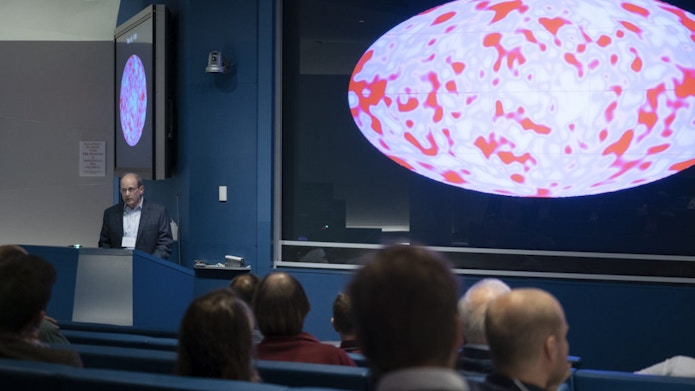A Competitive Way to Study the Origins of the Universe

The Origins of the Universe program was launched in 2017 to support three teams of researchers investigating three modern theories of the universe and the forces that continue to shape it. The teams operate independently, often exploring avenues of research that directly compete with those of the other teams, but meet for a joint conference once a year. Though their research is theoretical, they all hope to test their predictions at the neighboring Simons Array and Simons Observatory, the latter of which will begin operations in 2020 in Chile.
The telescopes at the observatories will be taking measurements of the cosmic microwave background radiation (CMB), which can provide clues about the early universe. Greg Gabadadze, associate director for physics at the Simons Foundation and a leader, along with Massimo Porrati, of one of the Origins research groups, describes analysis of the CMB as a kind of cosmic archaeology. “Archaeologists go back and dig out artifacts of the Roman Empire or something,” he says. “Through those artifacts, they learn how that society was organized.” Researchers studying the CMB can likewise excavate information about primordial physics.
The structure of the Origins of the Universe program is unusual in that the research groups are — intellectually — in direct competition with one another. Everyone involved is passionate about their work, and the annual meeting gives them a chance to discuss their competing ideas openly (“and peacefully,” one principal investigator affirms), and to broaden their horizons. “These interactions are beyond the interactions anyone could have within their own groups,” Gabadadze says.


